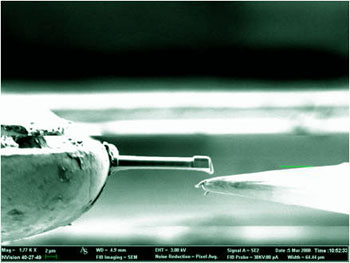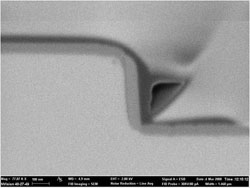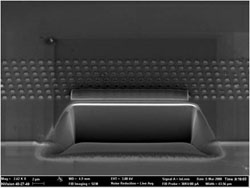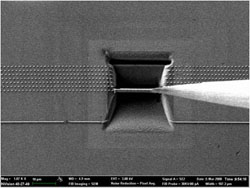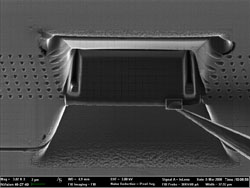The focussed ion beam (FIB) is a multi nanofabrication tool system capable of performing sophisticated nanomachining, in-situ metal or insulator deposition, lithography and metrology analysis. This versatile system is based on the dual ion and electron beams column concept, which allows it to perform ionic nanofabrication function while imaging using the scanning electron microscope. The liquid metal ion source (LMIS) for the system is gallium and it is integrated to an ionisation tungsten tip to produce a fine and high resolution ion beam. The additional features in the FIB are ion and electron beam induced deposition using gaseous metal-insulator sources.
Zeiss NVision 40 FIB System
The Zeiss NVision 40 FIB system offers the combination of three dimensional ion beam milling and electron microscopy which gives researchers a unique opportunity to modify, image and examine closely their devices simultaneously at nanometer scale resolution. This is achieved by integrating a dual beam technology into a system that allow very high resolution microscopy based on field emission SEM (FESEM), analysis and material restructuring and machining exercise in the same environment. It also has metallic and insulator deposition feature with the option of electron beam or ion beam assisted function. This is available from the gas injection system (GIS) unit providing deposition material such as tungsten, carbon and silica. Other gases available in the system are xenon difluoride for in-situ nano-etching and water for vapour assisted sample imaging. The FIB is also quipped with an array of high efficiency in-lens secondary electron; in-column back scattered electron and scanning transmission electron microscope (STEM) detectors. The STEM is used for extended high resolution metrology down to 0.8 nm resolution. The system can both be used as nanofabrication and advanced characterisation tools for optical, semiconductor and biological materials.
